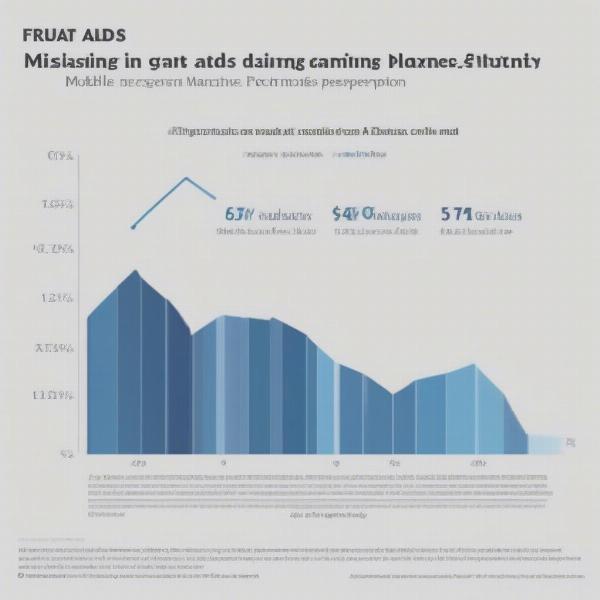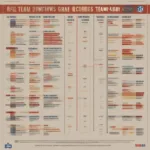Mobile game ads. We’ve all seen them. They interrupt our favorite videos, pop up during browsing sessions, and often bear little resemblance to the actual gameplay. But Why Are Mobile Game Ads So Bad? Why do they seem deliberately misleading, and more importantly, why do they continue to exist?
Similar to the misleading tactics employed by some game developers, the advertising landscape has become a minefield of deceptive practices. Read more about this on our blog post how-to-pirate-games-on-steam. The answer is a complex mix of marketing strategies, target demographics, and the economics of the mobile gaming industry. Let’s dive into the reasons behind those cringe-worthy mobile game ads.
The Disconnect Between Ad and Gameplay
One of the most common complaints about mobile game ads is that they often misrepresent the actual game. You might see an ad showcasing complex puzzle-solving or strategic combat, only to download the game and find a simple, repetitive clicker or match-three game. Why the bait-and-switch?
Simply put, these ads are designed to grab your attention, not accurately represent the game. They often highlight gameplay elements that are either exaggerated or entirely absent from the actual game. This is because these attention-grabbing visuals, often featuring dramatic scenarios or simplified gameplay loops, are more effective at generating clicks than a realistic portrayal of the often-mundane core gameplay. These ads often target impulse downloads, hoping to hook players before they realize the disparity.
Targeting a Broad Audience
Mobile games have a massive potential audience, encompassing a wide range of ages, interests, and gaming experience. Advertisers need to cast a wide net to reach as many potential players as possible. This leads to generic ads that focus on broad appeals like simple mechanics, satisfying visuals, or exaggerated scenarios.
The Psychology of Clicks
Mobile game ads often employ psychological tactics to encourage clicks and downloads. These tactics can include creating a sense of urgency (limited-time offers), appealing to the desire for completion (puzzles or collections), or tapping into competitive instincts (leaderboards and rankings).
Why are so many mobile game ads misleading?
Many mobile game ads are misleading because they prioritize attracting clicks and downloads over accurately representing the gameplay. This is often due to the competitive nature of the mobile game market and the pressure to acquire users quickly.
The Role of Data and A/B Testing
Mobile game advertisers rely heavily on data and A/B testing to optimize their campaigns. They constantly experiment with different ad creatives and target audiences to see what generates the highest click-through rates and conversion rates. This data-driven approach can lead to ads that are highly effective at attracting clicks, even if they are misleading or annoying.
The Low Barrier to Entry in Mobile Game Development
The relative ease and low cost of developing mobile games, especially hyper-casual games, contributes to the influx of low-quality titles. Many of these games rely on aggressive advertising strategies to compensate for their lack of depth or originality. This creates a cycle of low-quality games and misleading ads.
 Misleading Mobile Game Ads: A Comparison of Ad vs. Actual Gameplay
Misleading Mobile Game Ads: A Comparison of Ad vs. Actual Gameplay
The Economics of Free-to-Play
Most mobile games are free-to-play, meaning they rely on in-app purchases for revenue. This business model incentivizes developers to maximize downloads, even if it means using misleading ads. The more players they can attract, the greater the potential for in-app purchases. Free-to-play games rely on a small percentage of players making significant purchases, often called “whales,” to generate the majority of their revenue. This focus on attracting a large player base, even through misleading advertising, is a key factor in the prevalence of bad mobile game ads.
What is the purpose of misleading mobile game ads?
The primary purpose of misleading mobile game ads is to attract a large number of downloads, increasing the potential for in-app purchases and generating revenue for the developers.
Regulations and Industry Self-Regulation
While there are some regulations and industry self-regulation efforts aimed at curbing misleading advertising, enforcement can be challenging. The sheer volume of mobile game ads and the rapid pace of the industry make it difficult to effectively police all misleading practices.
The Future of Mobile Game Advertising
As players become more savvy and critical of misleading ads, there may be a shift towards more honest and transparent advertising practices. However, as long as the current free-to-play model dominates the mobile gaming landscape, the incentive to use attention-grabbing tactics will likely persist.
 Mobile Game Ad Strategies: A Look at Common Tactics
Mobile Game Ad Strategies: A Look at Common Tactics
How to Avoid Bad Mobile Game Ads
While it’s difficult to completely avoid mobile game ads, there are steps you can take to minimize your exposure to misleading ones:
- Read reviews before downloading: Check out user reviews and ratings before downloading a game. This can give you a better idea of the actual gameplay and whether the ads are representative.
- Watch gameplay videos: Look for gameplay videos on YouTube or other platforms to get a more accurate preview of the game.
- Be skeptical of exaggerated claims: Be wary of ads that promise unrealistic rewards or gameplay experiences. If it sounds too good to be true, it probably is.
How can I avoid downloading games with misleading ads?
You can avoid downloading games with misleading ads by reading user reviews, watching gameplay videos, and being skeptical of exaggerated claims in the advertisements.
Beyond Misleading Ads: Other Issues with Mobile Game Advertising
While misleading content is a major problem, it’s not the only issue with mobile game ads. Other common complaints include:
- Intrusive formats: Interstitial ads that interrupt gameplay or video content can be extremely disruptive.
- Repetitive ads: Seeing the same ad over and over again can be incredibly annoying.
- Excessive frequency: Being bombarded with mobile game ads constantly can lead to ad fatigue.
 The Impact of Misleading Mobile Game Ads on Player Trust
The Impact of Misleading Mobile Game Ads on Player Trust
Conclusion
The prevalence of bad mobile game ads is a complex issue rooted in the economics of the free-to-play model, the psychology of advertising, and the competitive nature of the mobile game market. While there’s no easy fix, being aware of the tactics used by advertisers can help you make more informed decisions about which games to download and play. While frustrating, understanding why these ads are so bad helps us navigate the mobile gaming landscape with a more discerning eye. Remember to always check reviews and gameplay videos before hitting that download button. So the next time you see a ridiculous mobile game ad, you’ll know why are mobile game ads so bad.

